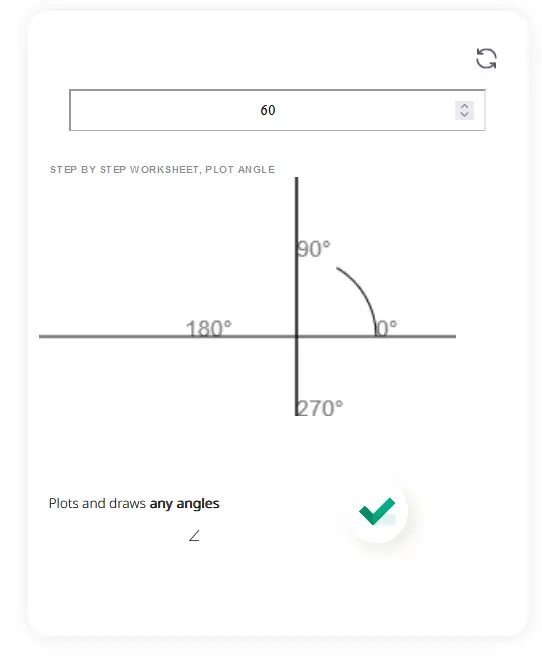Plots and draws any angles\[ \angle \]

The angle plotter typically takes in the angle value and other parameters such as the origin point, length, and direction. With these inputs, it calculates the coordinates of the start and end points of the angle and plots them on a graph or a coordinate plane.
The angle plotter can also be used to perform operations on angles, such as adding or subtracting them, or finding the complement or supplement angles.
Enter 45 into the box and hit the check mark button
Enter 145 into the box and hit the check mark button
Angles are an important concept in geometry and trigonometry. They are formed when two rays or lines meet at a common endpoint, known as the vertex. Angles are measured in degrees (°) or radians (rad).
Angles can be classified based on their measurements. An angle that measures exactly 90° is called a right angle. An angle that has a measure less than 90° is called an acute angle, while an angle that has a measure greater than 90° but less than 180° is called an obtuse angle. A straight angle measures exactly 180°, and a reflex angle measures more than 180° but less than 360°.
Angles can also be classified based on their relationships. Two angles that have the same measure are called congruent angles. Two angles that add up to 90° are called complementary angles, while two angles that add up to 180° are called supplementary angles. Two angles that share a common vertex and side but do not overlap are called adjacent angles.
Angles have important applications in various fields, such as architecture, engineering, physics, and computer graphics. They are used to measure and describe the direction and orientation of lines, shapes, and objects. Understanding angles is crucial in solving geometric problems, trigonometric equations, and analyzing the relationships between different elements in a figure.
